As main processing unit microcontrollers should be considered first, in order for it to be as cheap as possible. For the same reason the eye image capturing sensor should be a bare CMOS sensor. To properly illuminate the users eyes, which is essential for a reliable tracking, IR leds should be used in combination with a low cost IR bandpass filter for the camera, and an IR blocking filter glasses.
The device will be open source hardware/software and easy to clone with a 3D printer, and some harware/software skills.
Crazy Eyes
Automated portable animatronic eyes that point/look at the same point where you are looking
 Dasaki
Dasaki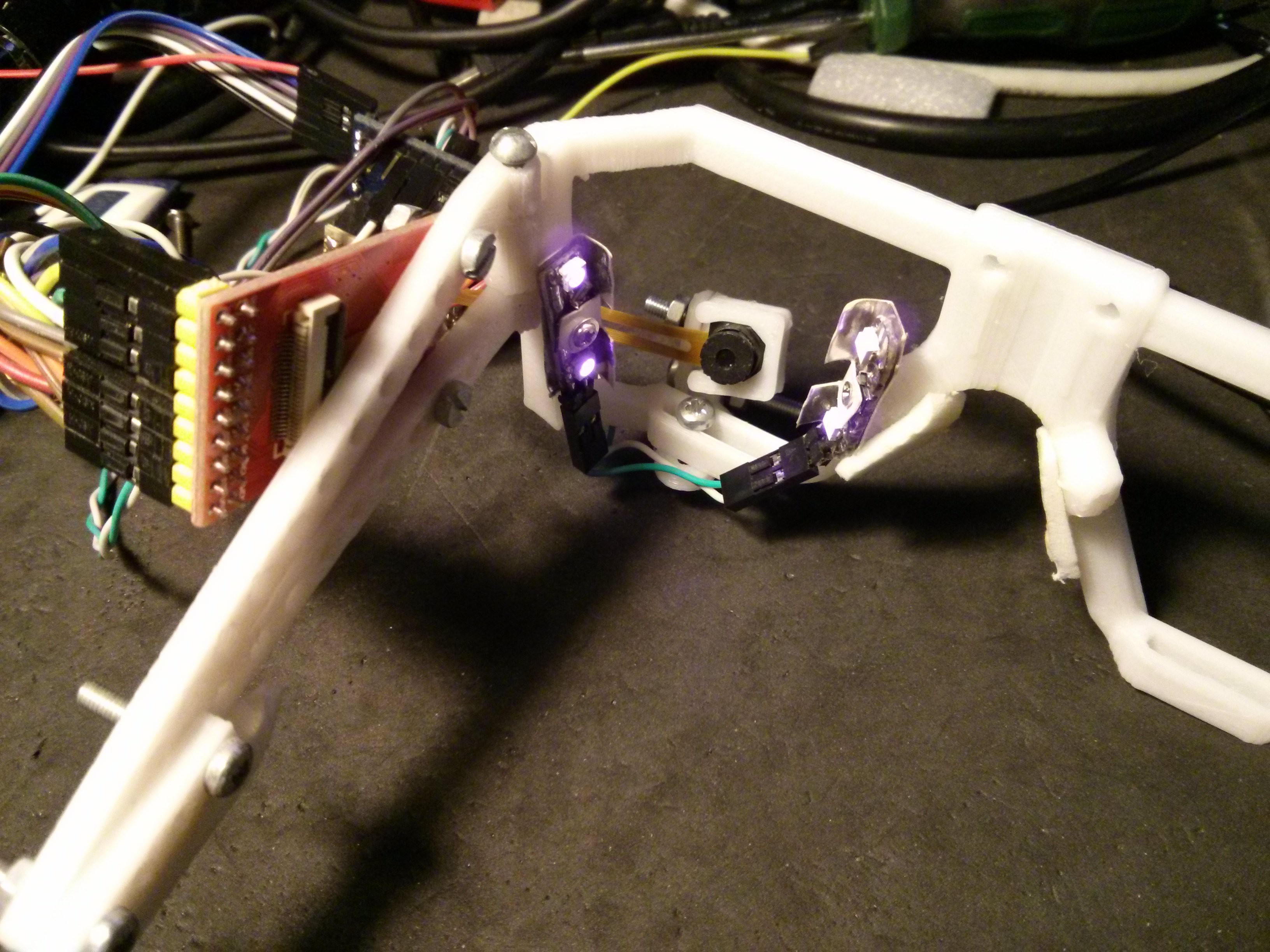

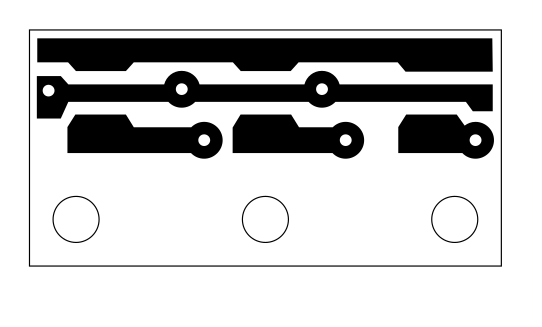
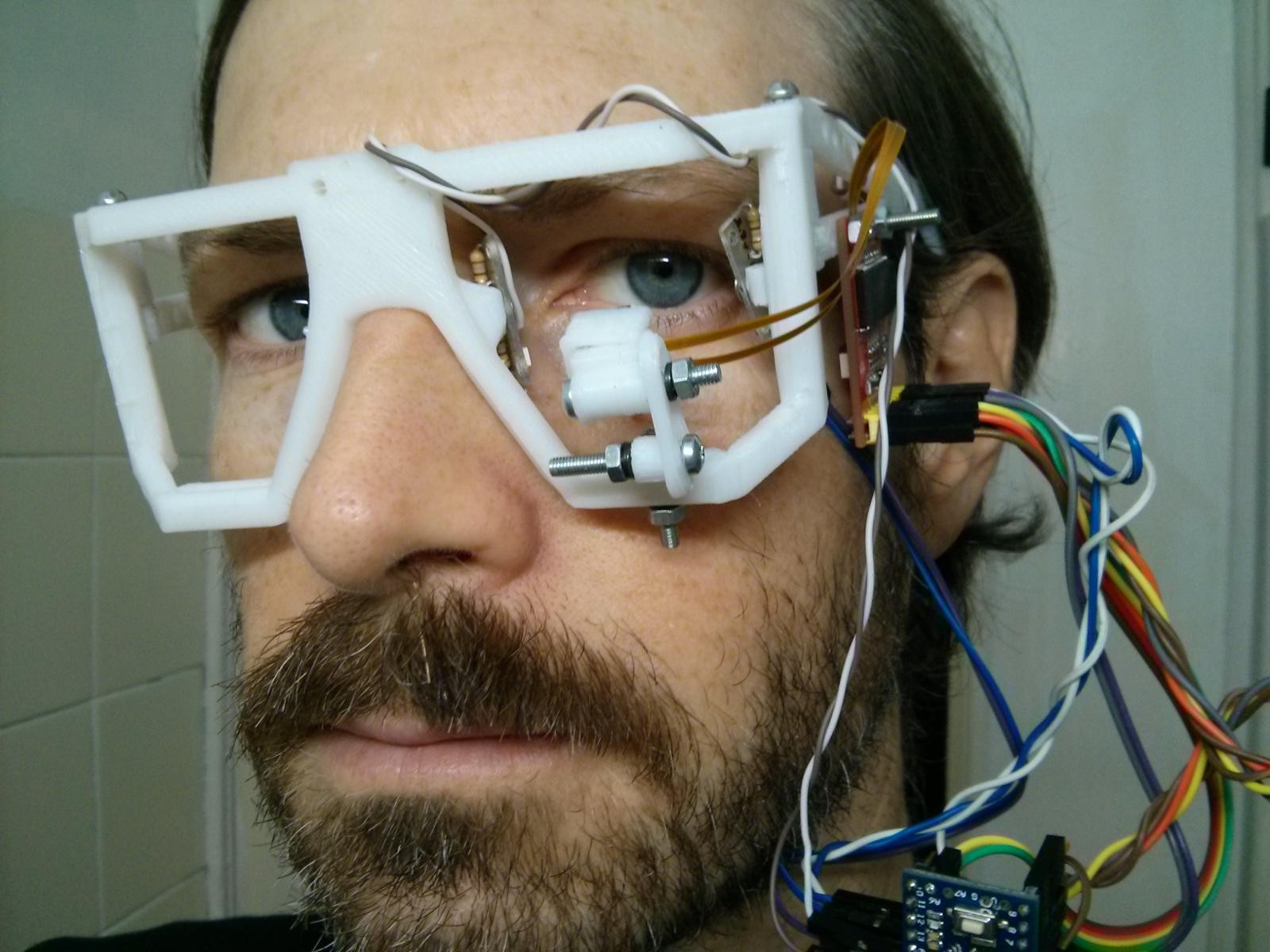
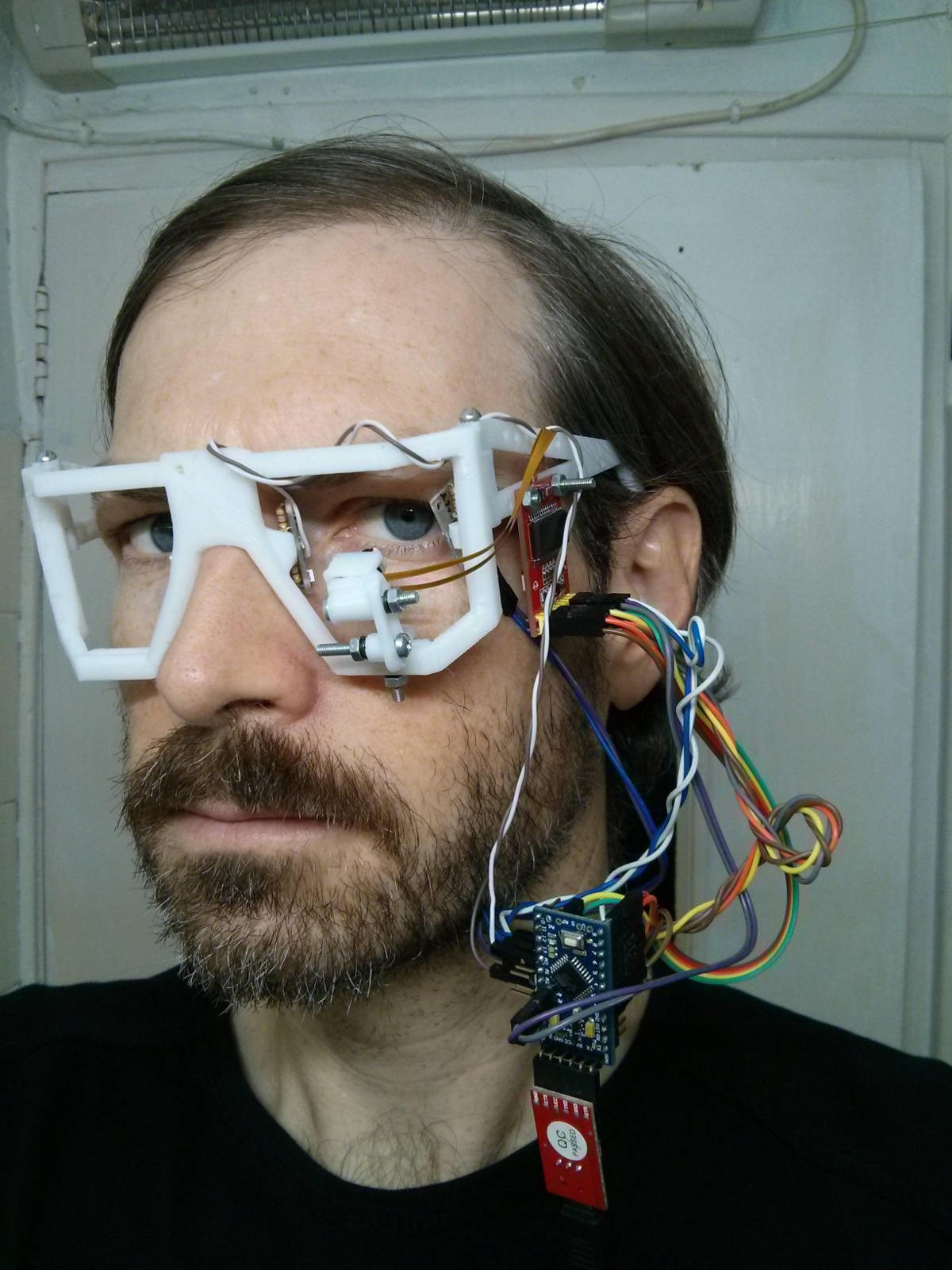
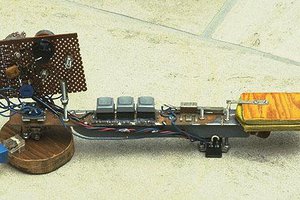
 Steve Anderson
Steve Anderson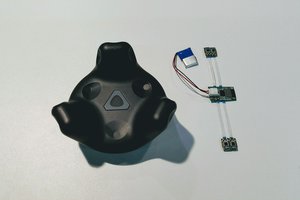
 Cedric Honnet
Cedric Honnet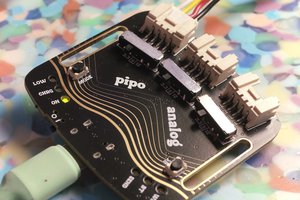
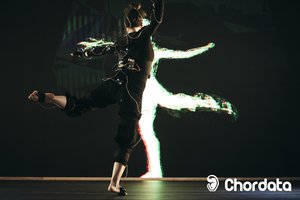
 Bruno Laurencich
Bruno Laurencich